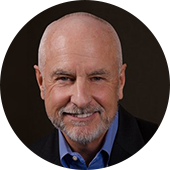During the COVID-19 pandemic, people spent a lot of time isolated and indoors, which helped foster an environment where some people now feel lonelier than ever. The result is a loss of social connectedness—the degree to which people feel the social connections and relationships in their lives to satisfy their wants and needs. When social…
Your Welcoa membership has expired.
The Case For Elevating Human Resources
This article was originally written for and posted to Forbes.com.
The 2021 Fortune/Deloitte CEO Survey asked CEOs about their biggest challenges. They named one above all others: talent, including attracting, hiring, retaining, developing, growing, and engaging employees.
Yet, despite this assertion that human capital is a precious resource, few companies actually include HR – the very function responsible for managing talent – as part of their “Inner Circle” for executing top business priorities.
This must change.
Human capital now drives and determines American competitiveness. Now, and in the coming years, human capital management will be imperative for all companies, and it will require that HR sit at the leadership table.
The Primacy of Human Capital
Human capital drives the US economy. It’s the linchpin for companies that increasingly rely on people to generate value.The US economy is now driven by services. Data by Deloitte shows that services businesses accounted for 86.3 percent of total private employment in the US in 2017, representing 124 million employees in everything from education and health care services to professional business services.
Many large US companies increasingly generate value from human capital. In 2020, for example, companies in the S&P 500 derived 90% of their value from “intangible assets,” most notably their intellectual property (IP) and brand value, which rely on a creative and engaged workforce.
But while human capital determines the success of US companies, competition for human capital is now fierce, and studies show it’s going to get worse.
Recently, employers have been facing what’s being called a “Great Resignation” as more employees switch jobs. Microsoft’s 2021 Work Trend Index found that 41% of the workforce is considering leaving their employer this year, with many looking for better pay and benefits, and more worker-friendly policies.
Studies also show that employers must prepare for longer-term labor trends that will extend well beyond any pandemic-related labor shortages.
A recent report, by economic data and analytics firm Emsi, shows that the mass exodus of baby boomers from the workforce, record low participation rates among the working-age population, and the lowest birth rates in U.S. history, will all lead to a long-term shortage of workers for decades.
Another report by The Conference Board’s, US Labor Shortages: Challenges and Solutions (2020), warns that the pool of working-age people will barely grow over the next decade due to “massive retirements, and disappointing labor force participation rates for several key demographics.”
In particular, The Conference Board report shows that blue-collar and manual services employers are experiencing tight labor markets, with 85 percent of companies in “mostly blue-collar industries” reporting recruiting difficulties.
“Competition for talent is going to become brutal,” said Emsi’s Director of Staffing Product Ron Hetrick, in a press release announcing The Demographic Drought report. “Businesses can no longer assume there will be enough people to go around.”
The Essential Role of Chief Human Resource Officers
This is nothing short of a paradigm shift. Companies can no longer see employees as commodities. Now and in the future, human capital is as essential and valuable as balance-sheet assets.Human resources must be ready to navigate these new challenges. It requires newly empowered HR Directors who can work closely with CEOs and Boards on strategies for attracting and retaining increasingly scarce employees.
Just as CFOs evolved from people who “managed the books” to important executives who advance growth, CHROs must evolve from payroll and employee benefits managers to Inner Circle C Suite advisors adept at maximizing human capital to achieve business outcomes.
CEOs agree that employees and workplace culture are the keys to success. Yet a Deloitte study found that many leaders believe “culture is a potential competitive advantage,” only 19 percent believe they have the “right culture.
CHROs must work with C Suites to create the right workplace cultures that will bring out the best in their people and fosters high employee wellbeing.
Gallup’s State of the American Workplace (2017) found that companies that foster high employee wellbeing see higher employee engagement and company performance, including improvements in:
- Attracting employees
- Retaining employees
- Customer service
- Product quality
- Higher profits
Human capital management requires an employee-centric mindset. HR directors must assume a big picture outlook, including how workplace cultures help companies deliver better customer service, cultivate loyal customers, and boost reputations and ultimately their stock value.
HR must maintain employee-centric workplaces to “make the company a more attractive place to work by improving working conditions…increasing work schedule flexibility; and, if necessary, reduce employee workload,” according to The Conference Board report.
According to McKinsey, this also means ensuring that organizations live their purpose and values to “articulate and role-model desired individual mindsets and behaviors linked to purpose …in the company’s culture and translating purpose into a set of leadership and employee norms and behaviors.”
A recent McKinsey study on how businesses can best organize for the future, suggests “future-ready companies share three characteristics: they know what they are and what they stand for; they operate with a fixation on speed and simplicity, and they grow by scaling up their ability to learn and innovate.”
“Chief human-resources officers (CHROs) and other leaders should do nothing less than reimagining the basic tenets of the organization,” says a recent article by McKinsey, The New Possible: How HR can help build the organization of the future, by Asmus Komm, Florian Pollner, Bill Schaninger, and Surbhi Sikka.
Companies that manifest an authentic purpose, beyond earning profits, attract high-quality workers, inspire creativity and engagement, and see lower turnover because employees increasingly want to work for companies that share their values.
In this light, CHROs play a central role in maintaining an employer’s reputation as a great place to work. This influences the ability to attract good employees, consumer decisions based on how companies treat workers, and investors who increasingly reward companies with happier employees.
Companies that don’t include CHRO’s in their Inner Circles will miss strategic opportunities. Companies must now give HR a seat at the leadership table which is essential for ensuring companies win the war for human capital.





